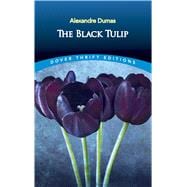Alexandre Dumas sets his captivating tale in the 1670s, a generation after Holland was gripped by the economic madness of Tulip mania and shortly after the mob lynching of a pair of Dutch statesmen. His fictional treatment of these historic events forms a timeless political allegory in which the rare flower represents the triumph of justice, tolerance, and true love over greed, jealousy, and obsession.









